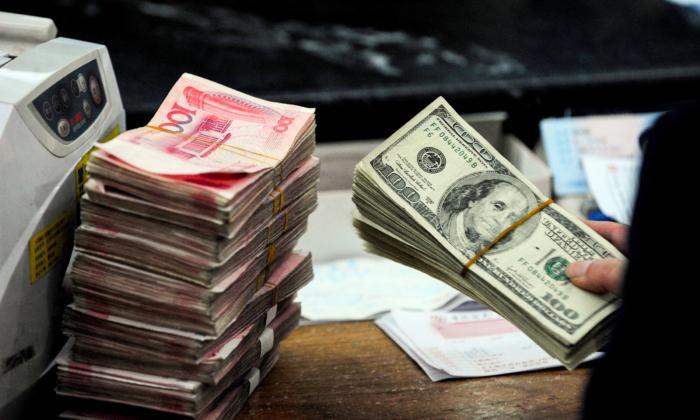March approaches, the month that the Federal Reserve promised to show its anti-inflation hand. It will, Fed Chairman Jerome Powell has announced, cease its quantitative easing and begin to raise interest rates.
Unless favored heavily by Lady Luck, whatever steps the Fed takes will bring market and economic pain and, in time, probably recession.
It was hopes of good luck that informed Powell’s—and the White House’s—pronouncements through most of last year when they claimed repeatedly that price pressures would pass speedily without the need for a policy response because, officials insisted, the problems were merely the transitory product of a post-pandemic demand surge and pandemic-induced supply chain problems.
Though this take could still be true, it’s highly unlikely on several counts. Even officials in Washington have now abandoned that fiction.
Any perspective on economic history always argued against Washington’s happy take on these matters. As this column pointed out months ago, inflation has fundamental roots. The federal government for years—under Presidents Barack Obama and Donald Trump—ran historically huge budget deficits and is continuing to do so under President Joe Biden.
Worse, the Fed’s efforts to keep interest rates low and pour copious amounts of liquidity into financial markets financed the budget deficits with the equivalent of printing money. Liquidity creation by the Fed has absorbed over $5 trillion in new federal debt over the past nine years, including more than $3 trillion since the pandemic began. This combination of policy has long been identified as a classic prescription for inflation.
Perhaps Fed decision-makers downplayed the inflationary risks last year because their expansive policies had gone on so long without any effect on the rate of price increases. Former Fed Chairman Alan Greenspan explained that seeming anomaly years ago in terms of the flow of inexpensive imports from China and elsewhere in Asia and Latin America.
This cheap supply of goods, he pointed out, had a powerful moderating influence on domestic prices. These imports and the damping effect of the fracking revolution on energy prices may indeed explain why it took so long for Washington’s inflationary policies to have an effect.
But now these moderators have disappeared. Wages in China and elsewhere are rising fast, as are the prices of their products in general, but especially to foreigners (Americans) because the foreign exchange value of the yuan has also risen. Meanwhile, one of Biden’s first acts on taking office was to halt the fracking revolution, contributing to a rise in global energy prices. And now sanctions against Russia, however otherwise necessary, will heighten that price pressure.
Absent the blessing of extremely good luck, the Fed now has two choices: One, it can raise interest rates quickly toward ongoing levels of inflation and otherwise substantively drain liquidity from financial markets and the economy; two, it can take a more cautious, moderate, and slower path toward monetary restraint.
The virtue of the first path is that it deals promptly with the inflationary pressure and lessens the chances that the nation will have to cope with an entrenched problem. There is no denying, however, that such a policy would also surely bring on an unwelcome downdraft in financial markets and even a mild recession. Dealing quickly with inflation would, however, allow market problems to reverse quickly and keep any recession short and shallow.
The second choice would cause the least immediate market disruption and economic pain. It would also allow the Fed to shift easily and avoid imposing any recessionary pressure in the admittedly unlikely event that the inflation is “transitory.” The danger is that the action would fail to forestall an entrenched inflation that would only get worse and eventually force more draconian monetary restraint.
No doubt such policy measures would precipitate a severe and long-lasting recession. Of course, the Fed could refuse to take sufficient action even as the inflation raged on, in which case the economy would in time face a very severe recession and stagnation from the dislocations and misallocations of capital brought on by the inflation.
Decision-making will, as always, depend heavily on politics. Both prudence and an understandable desire to sustain the present economic recovery will surely tempt policymakers to take the more gradualist course.





